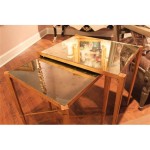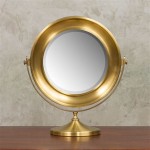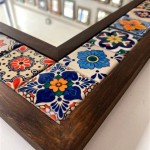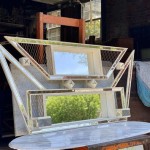How to Whitewash a Wooden Mirror Frame
Giving an old mirror frame a fresh and updated look can be achieved through whitewashing. This technique involves applying a diluted paint mixture to the wood, allowing the natural grain to show through, creating a light and airy aesthetic. This process is relatively simple and can be completed with minimal tools and materials. This guide will outline the steps involved in whitewashing a wooden mirror frame.
1. Preparing the Mirror Frame
Before embarking on the whitewashing process, it is crucial to adequately prepare the mirror frame. This involves cleaning, sanding, and addressing any imperfections. Begin by removing the mirror from the frame for easier access and protection during the process.
Thoroughly clean the frame with a damp cloth and mild soap to remove dust, dirt, and grime. Allow the frame to dry completely before proceeding. If the frame has any loose paint or varnish, gently scrape them off with a scraper or putty knife. Next, use fine-grit sandpaper to smooth out any rough areas or imperfections. This will ensure a smooth and even finish when applying the whitewash.
If the frame has any cracks or holes, use wood filler to repair them. Allow the filler to dry completely before sanding it smooth. Removing any dust from the frame after sanding is important to ensure a clean surface for the whitewash. This meticulous preparation will contribute to a professional and polished final result.
2. Applying the Whitewash
With the mirror frame adequately prepared, it's time to apply the whitewash. This step requires a diluted paint mixture, a brush, and a clean cloth. For the whitewash, you can use a combination of white paint and water, or commercially available whitewash.
To create a whitewash mixture using paint, mix white acrylic paint with water. The ratio of paint to water can be adjusted according to the desired level of opacity. A higher water ratio will result in a lighter and more transparent finish. Start with a 1:1 ratio and adjust according to your preferences.
Using a paintbrush, apply a thin layer of whitewash to the frame. Work in sections, ensuring even application. You can use a clean cloth to wipe away excess whitewash and create a more distressed look. Allow each layer to dry completely before applying another. For a more opaque finish, apply multiple coats, allowing each coat to dry thoroughly before applying the next.
3. Finishing Touches
Once the whitewash has fully dried, you can add a final touch to enhance the appearance of the frame. This can include a sealant or wax to protect the whitewash and provide a more durable finish. Depending on the desired look, you can use a matte or gloss sealant or wax.
Apply the sealant or wax using a clean cloth, working in small sections. Wipe away any excess sealant or wax with a clean cloth. Allow it to dry completely before reattaching the mirror to the frame. The sealant or wax will protect the whitewash from damage and enhance its longevity.
By following the steps outlined above, you can successfully whitewash a wooden mirror frame, creating a refreshed and revived look. This process is relatively straightforward and can be completed with minimal tools and supplies. This guide provides a comprehensive overview of the process, helping you transform your old mirror frame into a beautiful and stylish statement piece.

Whitewashing Painted Wood Mirror Artsy Rule

Timber Whitewash Mirror One Size Mattress

Whitewash Mirror Wood Rustic White Shabby Chic Frame Framed Bathroom Mirrors Makeover

Tutorial Create The Weathered Wood Look With Paint Transform A Mirror

33 X 27 Alexandria White Wash Framed Wall Mirror Amanti Art Target

My Diy White Washed Mirror Frame I Used Pine Wood For The Minwax Expresso Stain Stained Twice 2 Part Water To 1 Paint

Whitewashing Painted Wood Mirror Artsy Rule

Whitewash Mirror 18x18 40x30 Custom Sizes Wood Frame Rustic Bathroom Wall Vanity Small Large Gift Framed Diy

Whitewashing Painted Wood Mirror Artsy Rule

Rectangular Large Weathered Whitewash Frame Mirror








